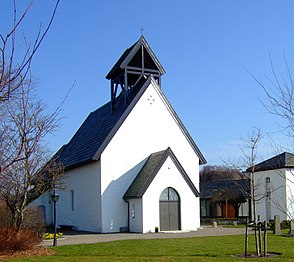Ogna Church
History
The earliest existing historical records of the church date back to the year 1347, but the church was likely built in the middle of the 13th century around the year 1250. The medieval stone church had a rectangular floor plan that did not get narrower for the choir. It had one window on the south side and two windows on the north side.
In 1814, this church served as an election church (Norwegian: valgkirke). Together with more than 300 other parish churches across Norway, it was a polling station for elections to the 1814 Norwegian Constituent Assembly which wrote the Constitution of Norway. This was Norway's first national elections. Each church parish was a constituency that elected people called "electors" who later met together in each county to elect the representatives for the assembly that was to meet in Eidsvoll later that year.
In 1840, the church was extended to the east with a new timber-framed choir, at the same time as the 17th century porch was replaced with a wooden tower. On 13 November 1991, the church caught fire and was totally ruined. The newly rebuilt church was consecrated on 5 June 1995.
Media gallery
-
Old church (before 1991)
-
Present church
See also
References
- ^ "Ogna kyrkje". Kirkesøk: Kirkebyggdatabasen. Retrieved 20 September 2020.
- ^ "Oversikt over Nåværende Kirker" (in Norwegian). KirkeKonsulenten.no. Retrieved 20 September 2020.
- ^ "Valgkirkene". LokalHistorieWiki.no (in Norwegian). Retrieved 6 February 2021.
- ^ "Om valgene". Valgene i 1814 (in Norwegian). Arkivverket. Retrieved 6 February 2021.
- ^ "Ogna kyrkje" (in Norwegian). Hå kyrkjelege fellesråd. Retrieved 22 June 2016.
- ^ "Ogna kyrkjestad" (in Norwegian). Norwegian Directorate for Cultural Heritage. Retrieved 19 September 2020.

